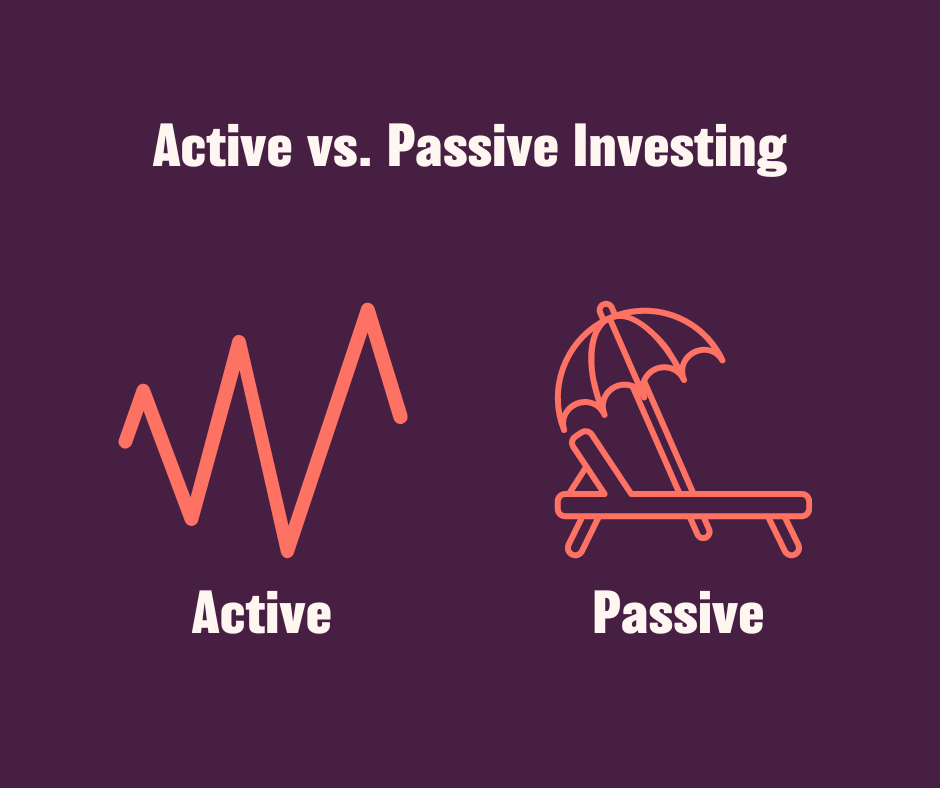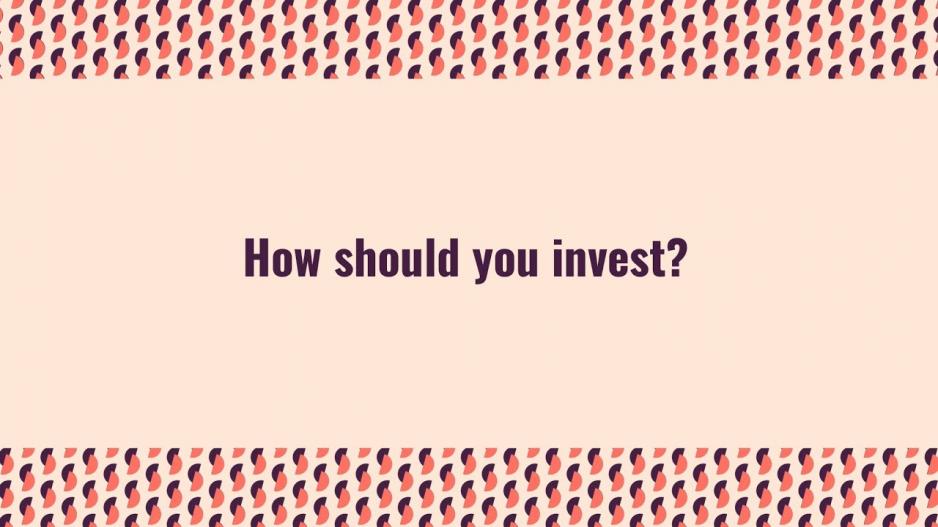In this lesson you will learn 💸
- What the different practical approaches to investing are
- The pro's and con's of the different approaches
- What the difference between active and passive investing is
Watch the short video to get started:
Summary
Broadly speaking, you have three choices moving forward: pick your stocks, funds and ETFs yourself, use a robo-advisor tool or get help from an expert. Or, a combination of all three approaches.
To make a choice, ask yourself the following questions:
- How much time do I want to dedicate to this?
- How important is having full control for me?
- What type of experience do I want to have, a digital or human one?
What type of investor are you? Active or passive?
What can help to inform your choice is to ask yourself what type of investor you might want to be - active or passive?
Here is the difference between the two:

Active investing
Active investing is already a great explanation for what it is. It’s where investors constantly trade, buy or sell assets - in response to favourable market fluctuations - in order to make quick gains. Active traders’ objectives are ultimately to outperform the overall market or a specific index.
If you are more in the active camp, then the DIY approach is for you. This means you will need a deposit account and a platform that allows you to trade.
Passive investing
Passive investing, as you may have guessed by now, is more laid back.
A passive strategy is where an investor buys and holds onto investments over the long term, the idea being that they will build wealth over time.
There’s much less trading overall and fewer knee-jerk responses to market fluctuations. A classic example of a passive approach is to buy an index fund that follows one of the major indices like the S&P 500 or FTSE 100.
If you are more laid back, then you might be well served with a self-selected amount of funds, a robo-advisor or a solution where a manager or bank manages your investments for you.
What platforms do you need to invest?
Depending on the choice you make, you might need different things:
- If you invest with single stocks or pick your funds and ETFs yourself, you'll need a brokerage account with a bank or an online broker. In most cases this can be opened online and many providers don't charge you for the account, but they might charge a trading fee for when you buy and sell your funds or ETFs.
- If you invest with a robo-advisor, the account comes as part of the package. Remember, in many cases the robo-advisors, unless they are a bank, do not hold your money, but use a bank (custody bank) where your money is being held.
- If you invest with the help of a human advisor, they'll will open a respective account for you and advise what works best depending on how they operate.
To remember the decision tree, we have prepared a handy checklist for you:
Download your checklist
Please login
Our contents are completely advertising free.
To benefit from full access to all of our lessons and webinars, please upgrade your account.
or join one of our live webinars with included 1 month premium access pass.
VIP Coaching is also available for
Your action 📝
- Use the criteria in the checklist to decide on an approach or combinations of approaches
- Start looking at providers to get a feeling for what you might like
